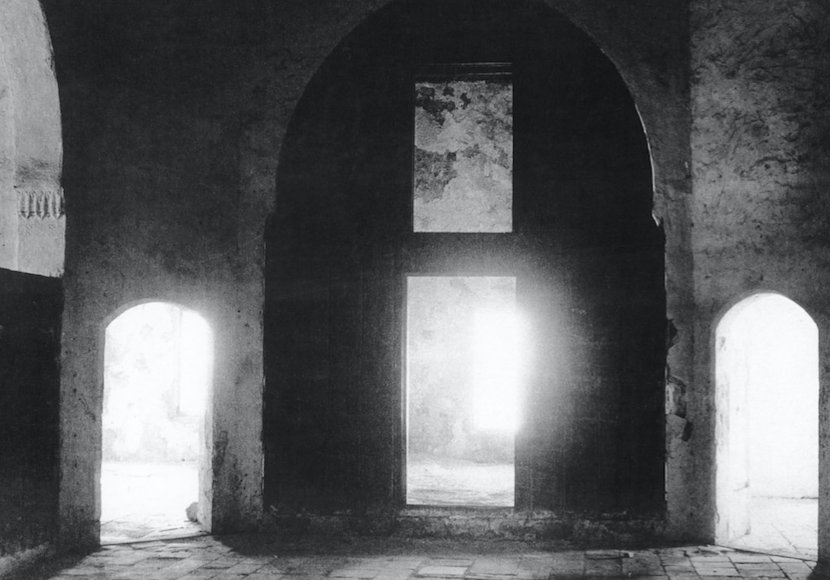
Bahá’u’lláh’s Writings – An Introduction

At one time We spoke in the language of the lawgiver; at another in that of the truth-seeker and the mystic…. [1]
This phrase was written by Bahá’u’lláh almost at the end of his life, in his own summation of his life’s work.
If you are new to Bahá’u’lláh’s writings, it might not be obvious where to begin. Indeed, it is likely that where to begin is different for each individual.
The aim of this article is to provide a broad description of some of Bahá’u’lláh’s key works which span a forty-year period from the 1850s to the 1890s. Also provided below are some online resources, including ebooks. If you haven’t read Bahá’u’lláh’s writings before, perhaps one of these will be your starting point.
Reading Bahá’u’lláh’s writings is not like reading a novel or an instruction manual. His writings, as noted in Bahá’u’lláh’s statement above, use different modalities at different times. The works form an interconnected whole, and reflection and repeated reading often lead to new insights as to the meaning of a particular passage and how it relates to other passages.
The phrase quoted above follows a discussion of unity among human beings. It is part of a sentence which in full reads:
At one time We spoke in the language of the lawgiver; at another in that of the truth-seeker and the mystic, and yet Our supreme purpose and highest wish hath always been to disclose the glory and sublimity of this station.[2]
The station to which Bahá’u’lláh refers is the emergence of unity among human beings, and here he draws our attention to this purpose. It seems helpful to bear his purpose in mind when reading his writings. To cite further:
That the divers communions of the earth, and the manifold systems of religious belief, should never be allowed to foster the feelings of animosity among men, is, in this Day, of the essence of the Faith of God and His Religion.[3]
Before turning to a short selection from Bahá’u’lláh’s most important works, it is helpful to mention the work Gleanings from the Writings of Bahá’u’lláh, a compilation prepared and translated into English by his great-grandson, Shoghi Effendi. Also, Prayers and Meditations by Bahá’u’lláh is a collection of Bahá’u’lláh’s devotional works.
Bahá’u’lláh’s mystical works tend to be those written earlier in his life, while those concerned with social order tend to occur later, although there is no sharp dividing line.
The Hidden Words are a collection of short statements on mystical themes. They are a common starting place because of their brevity and because of their reflection on universal questions of life and the relationship between the soul and the divine.
Two other mystical works are The Seven Valleys and the Four Valleys, which are generally published together. They describe the journey of the soul towards the divine using a metaphor of a journey through successive or different valleys.
The most important theological work written by Bahá’u’lláh, which discusses the nature of the Manifestations (or prophet-founders of religion) and the nature of religion itself, is The Book of Certitude. A work exploring similar themes is Gems of Divine Mysteries.
All of the above works were written in Baghdad before 1863. Following this is a period in which the imprisonment and exile of Bahá’u’lláh became increasingly harsh, and it was during this period that he wrote a number of letters to kings and rulers, including those who had imprisoned and exiled him. These letters contain counsel on governance and are collected in The Summons of the Lord of Hosts.
A few years later, in 1873, in the prison-city of Akka, Bahá’u’lláh wrote The Kitab-i-Aqdas: The Most Holy Book, his book of laws.
In the years that followed, Bahá’u’lláh wrote a series of letters, sent to enquirers or followers. These works included such iconic and central works as the Tablet of the World, the Book of the Covenant, the Tablet of Carmel, Glad-Tidings and the Tablet of Maqsud. These works supplemented and elaborated the principles and laws of Bahá’u’lláh’s teachings. These works are collected in a volume titled Tablets of Baha’u’llah Revealed After the Kitab-i-Aqdas.
Finally, in 1891, he wrote the Epistle to the Son of the Wolf, a Tablet addressed to a notorious oppressor of the Baha’is. This letter contains a summation of Bahá’u’lláh’s teachings.
In the Book of the Covenant, Bahá’u’lláh appointed his son, ‘Abdu’l-Bahá, as the interpreter of his teachings. ‘Abdu’l-Bahá’s own work is thus an additional authoritative source explaining Bahá’u’lláh’s teachings. Books such as Paris Talks and The Promulgation of Universal Peace are collections of series of speeches given by ‘Abdu’l-Bahá to audiences in Europe and North America, and they contain accessible introductions to Bahá’u’lláh’s teachings.
The links above are all to English translations of these works. Translations in other languages as well as the original Persian and Arabic versions are also available.
All of the above works have hyperlinks to the particular resource in the Baha’i Reference Library, and each work, as well as other works, can be read online there or downloaded as PDF versions. Another useful source is an online collection of Baha’i ebooks which can be downloaded as epub or kindle versions at http://www.bahaiebooks.org. That digital library also contains accessible introductions to the Baha’i Faith, such as An Introduction to the Baha’i Faith by the Baha’i International Community, The Earth is But One Country by John Huddleston and The Baha’i Faith: Emerging Global Religion by Douglas Martin.
Most Baha’i communities also offer short courses open to everyone which introduce the Baha’i teachings and develop capacities for service to humanity. The first such course is Reflections on the Life of the Spirit. It is easy to find your nearest Baha’i community online for more information.
Image Credits: Prison cell in Akka in which Bahá’u’lláh and his companions were held. Bahá’u’lláh’s cell is on the left. (1921. Copyright © Bahá’í International Community http://media.bahai.org/detail/6414236)
This article is the 6th in a series of what I hope will become 200 articles in 200 days for the 200th anniversary of the birth of Bahá’u’lláh. The anniversary is being celebrated around the world on 21 and 22 October 2017. The articles are simply my personal reflections on Bahá’u’lláh’s life and work, and any inadequacies in them are solely my responsibility.






